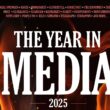Almost 20 years after the loss-making Future Plc almost concluded an audacious deal to acquire the then IPC , the specialist publisher is buying TI Media for £140m in cash.
Future will become Europe’s largest magazines group with revenue of more than £400m, twice the size of its closest UK rival. It’s a watershed deal because:
- Future’s plans to increase TI’s profitability by more than 50% through early cost savings and digital development may encourage further consolidation in magazine-media across the world
- Expected regulatory approval of the deal to combine two of the UK’s largest groups (and subsequent moves that may flow from it) has been made possible by the growth of Facebook and Google and the collapse of magazine profits. The deal mirrors similar consolidation of leading publishers announced last month in Australia.
- Insiders will be watching closely to see whether Future is able to digest the larger TI more successfully than Meredith has managed with Time Inc in the US
Epiris private equity (a spin-off from Electra) has claimed a 50% return from its two-year £110m investment in TI Media, despite apparent indecision on strategy. The sale of the children’s comics and music magazines have helped to make it a rewarding deal for the funders rather than the disappointment some may have feared.
The deal marks the end of a publisher which (previously as IPC Media and Time Inc UK) has dominated UK magazines for more than 50 years.
Like its former Time Inc owners, the London-based company has been good at trumpeting its “transformative success”. But the story of the last 10 years – for the UK magazine industry and its longtime market leader – has been one of inexorably falling profits and prospects. In just the past four years, TI revenue has declined by 20% and operating profit by 15%. The financial performance has been even worse: the £90m of operating profit generated during 2015-18 has almost been wiped out by £72m of reorganisation costs. Now, it’s being sold for less than 1 x revenue. Quite a finale for what had been one of the world’s most successful magazine groups.
IPC (the International Publishing Corporation) had been formed in 1963 by the merger of three competing companies – Odhams, Newnes, and Fleetway – which later added the Daily Mirror newspapers. It became almost a monopoly of magazines and popular newspapers in the UK.
It was once the publisher of more than 100 magazines, including the country’s four highly-profitable women’s weeklies, together selling some 8m copies. It had magazines across almost every sector, and also business information, newspapers, books, children’s comics, and printing plants. It became part of the Reed International (later Reed Elsevier) conglomerate, with sprawling interests across the manufacture of paper, paint and building materials. But serious media competition arrived in the 1980s, prompted by new full-colour printing presses, the rapid growth in advertising revenue – and IPC’s own monopoly profits.
Competitor magazines came thick and fast, through the expansion of then UK regional publisher EMAP, BBC launches of TV-linked magazines, the arrival of German publishers Gruner & Jahr and Bauer, and the expansion of US-owned Hearst and Condé Nast. It became easy to lampoon IPC as the “Ministry of Magazines” – bigger, richer and slower-moving than its newer, more agile competitors. But it was also the innovative publisher which gave British readers Loaded, Look, Now, Look & Learn, the imported Marie Claire, and In Style, and the market’s steadiest presence Country Life.
But, gradually, the new product development slowed up as IPC was milked for profits, first by Reed and then by Cinven private equity which bought it in 1998 for £860m. That was when the company was making £70m profits from £350m revenues. In the Information Memorandum, IPC boasted about its innovation, having launched its first four “internet sites”. Even then, that didn’t look very impressive.
Its profit growth for the previous five years had been juiced-up by cost-cutting and minimal R&D funding, not by organic growth. Even the modest revenue growth had camouflaged the company’s increasingly aggressive cover price increases. Operating profit margins had neatly leapt from 17% to 22% during the run-up to that auction by Reed Elsevier. But private equity bought the story – and itself made another killing.
Three years later, after having flirted with the whizzy dotcom idea of merging IPC with Future Plc, Cinven managed to sell the business for £1.15bn (a gain of 35%). The 2001 purchaser was one Time Warner, which had merged a year earlier with AOL. The AOL-Time Warner merger was still being hailed as a perfect 21st century media marriage before everyone including shareholders realised the scale of the folly. In the UK, the Time-IPC combination was also considered to be a smart move. But all that soon changed. AOL-Time Warner fell apart, and Time Inc was bought by Meredith Corp which eventually sold IPC in a buyer’s market.
Today, TI Media is 40 magazine brands including Country Life, What’s on TV, Wallpaper, Woman & Home, Woman, Woman’s Own, Decanter, Golf Monthly, Yachting World, Cycling Weekly and Chat, read by more than one-third of the UK population. Its web sites have more than 20m global users including its all-digital Trusted Reviews, GoodtoKnow, and Celebs Now. It operates exhibitions in cycling, hobbies and crafts, and has dabbled in TV production. The company employs some 1,000 people.
The CEO is Marcus Rich (ex DMGT and EMAP), whose five years at the helm have been characterised by: decentralisation into three London offices and one in rural Hampshire; £20m of bolt-on acquisitions, notably in events; the launch of TV/video production; and modest digital growth. He has also closed or sold up to 10 magazines, including sometime best-sellers Look, Now, NME, Uncut, SoapLife, Marie Claire UK, and InStyle.
Despite a 30% reduction in headcount during the last four years, insiders still believe the company is over-staffed. But the real issue is that the company’s claimed “transformation” relates almost entirely to the cost base: TI Media is still very much a print magazine business whose CEO has talked a good game: “I’m very positive. At the very heart of the business, you have something very unique – you have a relationship with the consumer that other platforms don’t have.” But, as a typical UK publisher vulnerably dependent on retail sales not subscriptions, Marcus Rich would kill to get his hands on the powerful user data generated by those digital platforms.
Contrast that with Future, the specialist magazine company founded almost 35 years ago by Chris Anderson, who went on to launch the world-conquering TedTalks. HIs sparky company grew on the back of booming video games in the 1990s but has had more than its share of shocks. More than 15 years of boom-and-bust started with its £53m sale to Pearson in 1994, the £142m acquisition by APAX private equity four years later, followed by a dotcom-fuelled IPO in 1999.
Future Plc first became a £1bn company in frothy times when investors scored companies more for revenue, ambition and tech connections than for mere profitability. But the drama was illustrated by the company’s four CEOs in the nine years to 2014. Then, former CFO Zillah Byng-Thorne got started.
The CEO’s five years have been characterised by the listed company’s success in streamlining its existing business, building strong technology platforms, and spending on canny (if sometimes surprising) acquisitions that have multiplied its market cap six times in 18 months. This week, it reached the magic £1.3bn – for the first time since the post-IPO aura of 2000.
Years of profit warnings and lay-offs have been consigned to history by revenue which has increased from £60m in 2015 to an expected £220m this year. The market cap has bounced from just £30m in five years.
Some 70% of last year’s revenue came from digital advertising, events and e-commerce across games, music, home interest, and hobbies. The rest came from the still substantial print portfolio: 80 magazines and 500 bookazines totalling 1.2m circulation. Key digital, print and event brands include: TechRadar, PC Gamer, Tom’s Guide, Homebuilding & Renovating Show, GamesRadar, The Photography Show, Music Week, Top Ten Reviews, Live Science, Guitar World, Total Film, MusicRadar, and Tom’s Hardware.
This week’s big announcement comes at a time when (some) magazine companies are carving out a new future from the digital disruption that has slashed readership and advertising revenues. That much is clear from financial analysis of the UK’s seven largest publishers which shows that aggregate revenues increased by 6% in 2018. Four of the companies increased revenues and four increased operating profit. Only three companies did both.
Based on 2018 filings, the UK’s magazine leaders, revenues and EBITDA margins are:
- Immediate (£211m, 20%)
- TI Media (£209m, 12%)
- Hearst UK (£146m, 3%)
- Dennis UK (£133m, 16%)
- Future (£125m, 17%)
- Bauer (£120m, 16%)
- Condé Nast (£105m, 5%)
D.C.Thomson, which has acquired the Stylist Group and Aceville, is believed to have (as yet unrecorded) magazine revenues of some £110m.
Future is forecasting revenues of £220m for 2019.
The most profitable company (Immediate), the organically fastest-growing (Dennis) and the acquisitive Future Plc stand out as having increased revenues for each of the past three years, while TI, Bauer and Conde Nast have done the reverse. But there are other distinguishing points. Dennis (UK), which was last year acquired for £166m by Exponent private equity, has the lowest headcount (444) and, consequently, a per capita revenue of £300k – some 50% better than the average of its peers.
Inevitably, the profit performances have been affected by M&A. Future’s soaring revenues (from £59m in 2016 to £125m last year) have been propelled by acquisitions, not least in the US from where an estimated 50% of its revenue now comes. But 11% of the revenue growth in 2018 was organic. Immediate’s 5% growth in revenue and 10% in profit will, presumably be, at least sustained in 2019 by the Burda-owned company’s acquisition last September of BBC Good Food for £32m.
The Dennis performance (revenue up by 24%) explains why Exponent will be happy to have paid 1.25 x revenue or, perhaps, 8 x 2018 profit (pre organic investment) just for the UK. On that basis, Dennis US ($40m revenue) came ‘free’.
TI Media did good deals this year by selling its music brands NME and Uncut to BandLab for £8.5m, and its children’s comics to Rebellion for about £5m.
It is notable that, for all the multi-brand diversity of these UK magazine groups, many are known to derive more than 30% of their profits from individual brands e.g. Immediate (Radio Times); TI (What’s on TV); Hearst (Good Housekeeping); and Condé Nast (Vogue). Bauer, whose profits are a fraction of those earned by the former EMAP and by what is now Europe’s largest radio group, has its magazine profits (down 30% to £19.6m in 2018) primarily spread across Closer, TV Choice, Take a Break, and Motorcyle News. But Dennis looks much better with emerging profits from its fast-growing revenue of Buy a Car e-commerce, while the company’s profitability is still powered by The Week.
The point is that three of the UK’s most profitable magazines are TV listings weeklies, published by Immediate, TI and Bauer. There’s nothing wrong with that, of course, however surprising it may be that the UK population still buys more than 2.5m copies of these paid-for magazines despite the profusion of newspaper supplements and digital programme guides. But the listings sales do keep falling: a further 7% came off in Jan-June 2019, compared with the previous year. And Radio Times, by far the most profitable, lost 10%. But this oldest listing magazine of all continues to benefit from aggressive cover price increases that have much more than compensated for the sliding copy sales.
That is the flipside of the revenue growth of these magazine-centric companies. They are gradually diversifying into events, broadcasting, and (sometimes) even into digital services that are more than mere ancillaries to printed magazines. But they are still preoccupied by magazines and almost none of the claims routinely trotted out about the stabilisation of copy sales bears scrutiny.
Sales of every single one of the 36 women’s lifestyle and fashion magazines audited for Jan-June this year were down on 2018. You might have missed that, amid circulations inflated by tens of thousands of free copies pumped out by even the most prestigious magazines. Who would have thought Grazia and Good Housekeeping needed to pad their circulations with 27% and 18% respectively of free copies? But Good Housekeeping has lost 14% of its paid circulation since 2015, and 22% of what are now counted as paid copies are discounted sales as part of magazine “multi-packs”.
All six TV listings weeklies also declined (again). Radio Times and What’s on TV have lost 27% and 23% respectively of their paid circulation in just three years.
There was a 50% decline overall in UK sales of printed magazines during 2011-18. Magazines now get only 2% of all advertising expenditure, compared with 8% just 10 years ago, and 6% across Continental Europe. That dramatic loss of share (despite solid research endorsing the “trust” readers place in magazines) clearly motivates publishers to camouflage falling copy sales. Arguably, it risks both diluting substantial strategies to diversify beyond print and also accelerating the decline in sales. Some magazines are dying, some are killing themselves.
That’s now the challenge for Byng-Thorne. The fact that Future’s acquisition of TI Media is likely to be waived through by the regulators (in the same way as Bauer’s monopolistic acquisition of Pacific Magazines in Australia) is significant because it might drive the strategy beyond acquisition.
Future’s post-acquisition plans include heavy cost-savings from overheads, which might well account for the £15m forecast for Year 1. It must have eyes on the 17% of TI’s headcount described as “administrative”.
The energetic, tech-savvy Future team will enjoy imposing its own systems on TI’s creaking bureaucracy. The appointment of TI’s CFO Rachel Addison to the role across the enlarged Future is inspired. There may also be speedy digital initiatives and management changes, notably in the special interest magazines (which are located outside London on the way to Future’s headquarters at Bath in the UK’s South West).
Future executives will have some good ideas for Trusted Reviews which may fit neatly with the increasingly-global TechRadar and the US-based reviews and e-commerce business. Given the inhibitions of TI’s former US parent, we might expect a transatlantic push for many of Future’s “new” magazines.
There might be some mergers, closures and divestments especially in the troubled women’s interest categories. But bringing the two companies’ home interest magazines, exhibitions, and digital services together may produce a big win. An even better payback could come from deals that would have been unimaginable just 18 months ago when Future had been blocked by the regulators from acquiring the 40k-circulation Stuff magazine rival to its own T3:
- TV listings: What’s on TV and TV Times are the “no-right-to-exist” magazines that Future may find the least appetising, in spite of their enduring profitability. The fact is that nobody would value these magazines more highly than their direct competitors – Immediate and Bauer. Given changed attitudes to consolidation in a battered print market, UK regulators might now allow either of these companies to buy their listings rivals. In so, the price could exceed £75m, something like 5 x profit.
- Distribution: It is believed that regulators would also allow TI’s retail marketing and distribution company Marketforce (which also has external clients) to be merged with the £200m-revenue market leader Frontline, owned jointly by Bauer, Haymarket and Immediate. It would be argued that a distribution monopoly could help magazines to survive in a shrinking retail market. For Future, the deal could be the ‘win-win’ of cash back, along with improved retail terms and fire-power for its own magazines – and a 10% reduction in TI headcount.
There are many points of comfort for Future in this deal, with some 50% of the TI profit and 20% of the revenue coming just from What’s on TV and TV Times. Together with the weeklies Country Life, Chat, Horse & Hound, and the monthly Women & Home and Ideal Home, these seven brands generate at least 100% of TI Media’s profit. And they may account for just 50% of the headcount.
However, divestment of the TV listings and distribution business might just be the secret sauce of the acquisition, since they could enable Future to recoup almost the whole purchase price. It would then have acquired some £150m of revenue – including many of the company’s best long-term media brands – almost for nothing.
There is plenty of scope for pleasant surprises as Future gets to grips with TI Media, once it clears the shareholder and regulatory hurdles early in 2020. There’s a good reason why London’s financial analysts have dubbed Future’s CEO “God-Zillah”. Momentous times.



